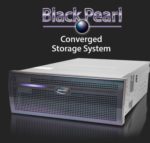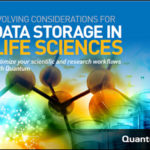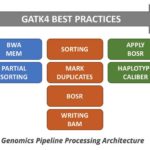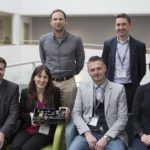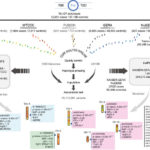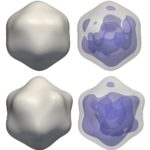Spectra Logic is teaming with Arcitecta for tackling the massive datasets used in life sciences. The two companies will showcase their joint solutions at the BioIT World conference this week in Boston. “Addressing the needs of the life sciences market with reliable data storage lies at the heart of the Spectra and Arcitecta relationship,” said Spectra CTO Matt Starr. “This joint solution enables customers to better manage their data and metadata by optimizing multiple storage targets, retrieving data efficiently and tracking content and resources.”
Innovative Use of HPC in the Cloud for AI, CFD, & LifeScience
Ebru Taylak from the UberCloud gave this talk at the Stanford HPC Conference. “A scalable platform such as the cloud, provides more accurate results, while reducing solution times. In this presentation, we will demonstrate recent examples of innovative use cases of HPC in the Cloud, such as, “Personalized Non-invasive Clinical Treatment of Schizophrenia and Parkinson’s” and “Deep Learning for Steady State Fluid Flow Prediction”. We will explore the challenges for the specific problems, demonstrate how HPC in the Cloud helped overcome these challenges, look at the benefits, and share the learnings.”
Evolving Considerations for Data Storage in Life Sciences
The latest lab instruments are driving the need for powerful IT resources in the life sciences. Laboratory technologies are evolving rapidly. Download the new report from Quantum, to discover the latest for data storage in life sciences.
Survey: Life Sciences lagging behind in AI development
The Pistoia Alliance has released results of a survey that found that 72 per cent of science professionals believe their sector is lagging behind other industries in the development of AI. “Spaces to virtually collaborate, like our Centre of Excellence, will become even more critical as political and social shifts – from Brexit to changes to US immigration laws – impact how scientists share knowledge and ideas. AI is poised to have a radical impact on life sciences and healthcare, but the industry must give researchers the best chance of success.”
DDN and Parabricks Accelerate Genome Analysis
Today DDN announced a Parabricks technology solution that provides massive acceleration for analysis of human genomes. The breakthrough platform combines GPU supercomputing performance with DDN’s Parallel Flash Data Platforms for fastest time to results, and enables unprecedented capabilities for high-throughput genomics analysis pipelines. The joint solution also ensures full saturation of GPUs for maximum efficiency and provides analysis capabilities that previously required thousands of CPUs to engage.
BioScience gets a Boost Through Order-of-Magnitude Computing Gains
Intel is working with leaders in the field to eliminate today’s data processing bottlenecks. In this guest post from Intel, the company explores how BioScience is getting a leg up from order-of-magnitude computing progress. “Intel’s framework is designed to make HPC simpler, more affordable, and more powerful.”
Optalysys Optical Processing Achieves 90 percent energy savings for DNA Sequence Alignment
The GENESYS project applied Optalysys’s unique optical processing technology to perform large-scale DNA sequence alignment. “The collaboration with EI has been a great success,” said Dr. Nick New, founder and CEO of Optalysys. “We have demonstrated the technology at several international conferences including Advances in Genome Biology and Technology, Plant and Animal Genome Conference and Genome 10K/Genome Science, to an overwhelmingly enthusiastic response. We are looking forward to continuing our strong relationship with EI through the beta program and beyond.”
Survey shows how AI Could Revolutionize Life Sciences
Some 44 per cent of life science professionals are using or experimenting with AI and deep learning, while 94 per cent expect an increase in use of machine learning within two years. These are findings from a survey carried out by the Pistoia Alliance, a global, not for profit alliance that works to lower barriers to innovation in life sciences R&D. “Our survey data shows that while life science professionals are already exploring how AI, ML and NLP can be used – there are clear gaps in the knowledge, data, and skills, which will enable more pharma and biotech companies to achieve tangible results from AI.”
Supercomputing Virus Structures at Nanoscale with XFEL
A team at Berkeley Lab are using innovative computational methods to enable new X-ray science. “The creation of XFEL facilities, including the Linac Coherent Light Source (LCLS) and the European X-FEL, have created opportunities for conducting new experiments which can overcome the limitations of traditional crystallography.”

